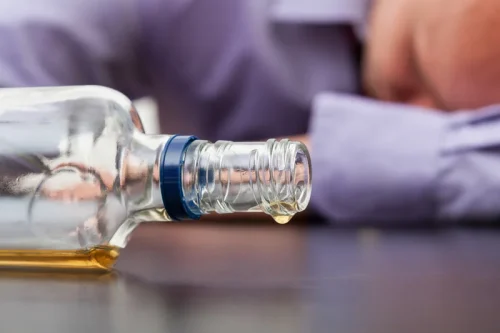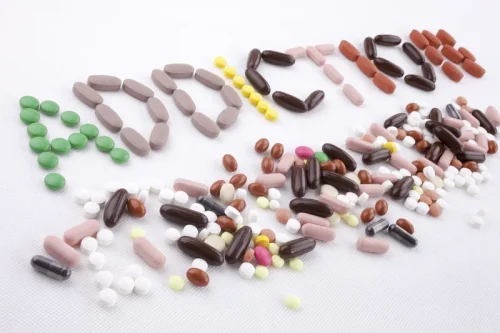
Heavy chronic alcohol consumption increases the risk of mental health disorders including depression, anxiety, psychosis, impairments of memory and learning, alcohol dependence and an increased risk of suicide. Both acute and chronic heavy drinking can contribute to a wide range of social problems including domestic violence and marital breakdown, child abuse and neglect, absenteeism and job loss (Drummond, 1990; Head et al., 2002; Velleman & Orford, 1999). Binge alcohol exposure (i.e., chronic intermittent exposure to high alcohol doses) in rats during adolescence produces long-lasting changes in memory function (White et al. 2000) and interferes with the normal development of sensitivity to alcohol-induced motor impairments (White et al. 2002). Furthermore, chronic ethanol treatment in rats may lead to increased NMDA-mediated neurotoxicity, which could be exacerbated by repeated withdrawals (Hunt 1993).
- The technologies also allow them to understand how differences in brain structure and function may contribute to substance use, misuse, and addiction.
- By clicking “Submit,” you certify that you have provided your legal name and phone number, agree to the terms and conditions and privacy policy, and authorize Addictionresource to contact you.
- Research has shown that the terminology used does, in fact, influence how people with a substance use disorder view themselves as well as how others view them.
Diagnosing Substance Dependence

Some studies using animal models involving repeated withdrawals have demonstrated altered sensitivity to treatment with medications designed to quell sensitized withdrawal symptoms (Becker and Veatch 2002; Knapp et al. 2007; Overstreet et al. 2007; Sommer et al. 2008; Veatch and Becker 2005). Moreover, after receiving some of these medications, animals exhibited lower relapse vulnerability and/or a reduced amount consumed once drinking was (re)-initiated (Ciccocioppo et al. 2003; Finn et al. 2007; Funk et al. 2007; Walker and Koob 2008). Indeed, clinical investigations similarly have reported that a history of multiple detoxifications can impact responsiveness to and efficacy of various pharmacotherapeutics used to manage alcohol dependence (Malcolm et al. 2000, 2002, 2007).
More on Substance Abuse and Addiction
If you choose an outpatient detox facility within your insurance network, you will likely have higher insurance coverage and lower out-of-pocket costs. Continue reading to learn more about alcohol rehab, the different treatment options available, and how to find the right alcohol program for you. For the European Union, the US and Canada, social costs of alcohol were estimated to be around €270 billion (2003 prices; Anderson and Baumberg, 2005), US$185 billion (1998 prices; WHO, 2004), and CA$14.6 billion (2002 prices; Rehm et al., 2006), respectively.
Choosing an Alcohol Rehab Treatment Program
Sensitization refers to an increase in the reinforcement value of drugs following repeated exposures. Tolerance refers to a decrease in the reinforcing efficacy of drugs following repeated exposures. Once neuroadaptation has occurred, removal of alcohol from the organism leads to a withdrawal syndrome. The positive reinforcing effects of alcohol generally are accepted as important motivating factors in alcohol-drinking behavior in the early stages of alcohol use and abuse.

We’ll assess your treatment needs, verify your insurance, and help you choose appropriate rehabilitation for alcoholism for you. The longer you drink, the worse your physical dependency on alcohol will become, and the harder it will be to get sober. If you choose to drink, the UK Chief Medical Officers (CMOs) advise that to keep health risks from alcohol to a low level it is safest not to drink more than 14 units a week on a regular basis. If you regularly drink as much as 14 units per week, it’s best to have three or more drink free days each week. If you drink regularly, alcohol changes the way your liver works, your brain function and creates dependence – meaning you need to drink more to have the same effect.
Impact on your health

Given the diverse and widespread neuroadaptive changes that are set in motion as a consequence of chronic alcohol exposure and withdrawal, it perhaps is not surprising that no single pharmacological agent has proven to be fully successful in the treatment of alcoholism. It is worth noting that the problem drinking participants demonstrated reduced learning rate in response to positive prediction error (i.e., when receiving unanticipated shock avoidance). As pain relief and https://ecosoberhouse.com/ pain avoidance has been found to be inherently rewarding [74], our finding may indicate dysfunctional reward learning in those with problem drinking. Indeed, there is preliminary evidence suggesting that individuals with AUD may be impaired in learning from reward prediction errors [75]. Past studies investigating learning in those with problem drinking have further reported poorer reward learning that involved monetary outcomes relative to healthy controls [76, 77].
- This should include interventions aimed primarily at the drinking behaviour, including psychosocial and pharmacological interventions, and interventions aimed at dealing with co-occurring problems.
- Unlike alcoholics, binge drinkers may drink heavily on the weekends but can get through the week without a drink.
- To avoid experiencing withdrawal symptoms, the person has to keep consuming alcohol.
- If you find it very difficult to enjoy yourself or relax without having a drink, you could have become dependent on alcohol.
- Models that produce the learning rates for the signed PE allow an asymmetric effects of better or worse (than expected) outcome on learning [51].
Adelstein and colleagues (1984) found that cirrhosis mortality rates are higher than the national average for men from the Asian subcontinent and Ireland, but lower than average for men of African–Caribbean origin. Cirrhosis mortality was lower in Asian and African–Caribbean women but higher in Irish women. However, because there were few total deaths in ethnic minority groups this may lead to large errors in estimating physiological dependence on alcohol prevalence in this population. Studies in England have tended to find over-representation of Indian-, Scottish- and Irish-born people and under-representation in those of African–Caribbean or Pakistani origin (Harrison & Luck, 1997). There are relatively few specific specialist alcohol services for people from ethnic minority groups, although some examples of good practice exist (Harrison & Luck, 1997).

Key elements of the stress circuit are corticotropin-releasing factor (CRF) and norepinephrine (NE)-releasing neurons that converge on γ-aminobutyric acid (GABA) interneurons in the central nucleus of the amygdala and which are activated during the development of dependence. Changes in the reinforcing value of alcohol during the transition from alcohol use and abuse to dependence reflect (counter)adaptive neural changes resulting from chronic exposure to high alcohol doses. As stated above, during the early stages of nondependent alcohol use, drinking behavior largely is motivated by alcohol’s positive reinforcing effects, whereas in the dependent state it likely is driven by both the positive and negative reinforcing effects of the drug. Multiple processes contribute to the increased motivation to seek drugs during the development of dependence.
